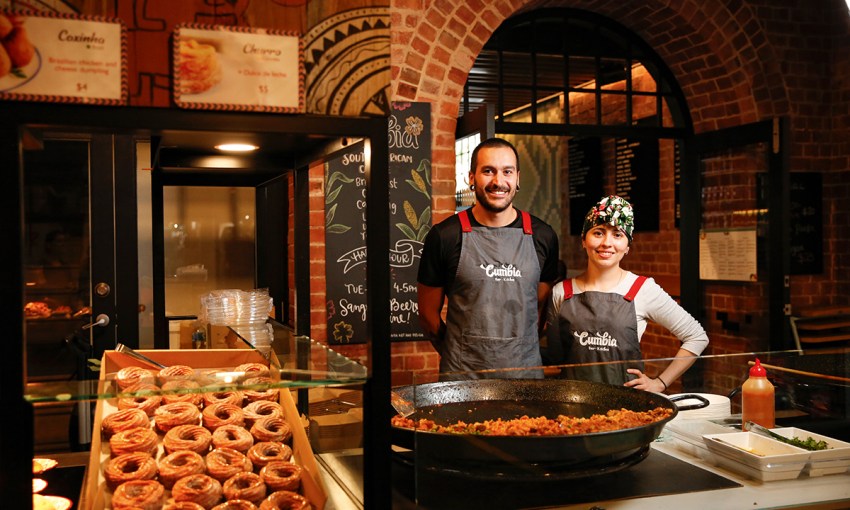We might not be able to travel internationally right now — but who needs the time zones, airports and jetlag when there’s a smorgasbord of culture right here in South Australia? Take yourself on a gastronomic global adventure around the Adelaide Central Market.
All the flavours of the world
Head down to South America
A fusion of Latino music and mouth-watering aromas emanate from Adelaide Central Market’s north-eastern corner on Friday nights when Cumbia Bar and Kitchen fires up giant dishes of paella and South American fare for hungry market-goers.
The food, music and action in the kitchen make for an alluring cultural cocktail, all designed by husband and wife team Salvatore and Julietha Burgos, who founded the restaurant two years ago. Cumbia Bar and Kitchen offers takeaway-style street food as well as a sit-down restaurant where guests can enjoy a tipple, authentic Latin American cuisine, and people-watch along Grote Street.
“It’s a great vibe on a Friday night,” says Salvatore. “You can sit here and feel like you’re in a different world because of the music, the drinks and the food — it transports you to South America.”
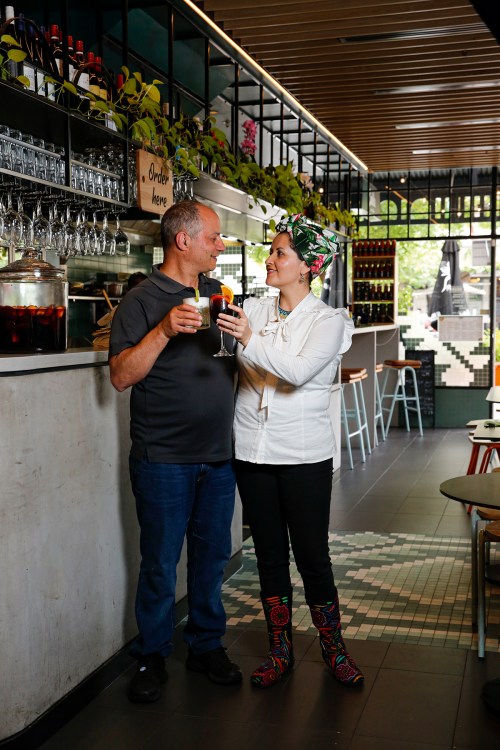
Julietha says cultural fusion is at the heart of Cumbia — the word itself referring to a type of Latin American dance music influenced by many cultures. Julietha and Salvatore are themselves a perfect pairing of cultures, with Julietha from Colombia and Salvatore from Italy.
“Cumbia means a fusion, a mix of culture, and that’s what we want to show here,” she says.
The fusion theme is cleverly threaded throughout the menu, a blend of Latin American and modern Australian cuisine. A great example is the arepa — a South American cornbread topped with smashed avocado and prawns.
Although it says paella on the menu, it’s actually a Colombian version called arroz atollado, cooked a little differently with chorizo and chicken instead of seafood, with a kick of cumin, coriander and paprika.
“South America was colonised by the Spaniards and they brought the idea of paella. We actually make arroz atollado, but we call it paella because it’s more familiar,” Salvatore explains.

As an Italian, he was blown away by a trip to South America to meet Julietha’s family, who make artisanal foods such as tomales. That trip provided deep inspiration for the restaurant. “We visited a place in the Amazon and it was a hell of a trip to get there, right on the border of Colombia, Peru and Brazil,” he says.
“Three different countries and cultures in the same place, it was amazing. I’ll never forget that.”
Cumbia’s menu references many South American cultures. The arepa is from Colombia, the ceviche is Peruvian, the meatballs are Brazillian, and the marinated prawns are Ecuadorian.
“Colombian cuisine is very tasty. Lots of fresh coriander, red onions, chillies, lots of lemon and lime. But we don’t want to limit ourselves, because there are a so many flavours and dishes to discover,” he says.
Guests can play it safe and order a margarita, or broaden their horizons with regional cocktails such as Monkey LaLa and Pisco Sour. The churros are to die for, made in a round donut shape and topped with the caramel sauce, dulce de leche.
“Each culture has this treat in a different style. In Italy we call it zeppole — it’s the same pastry, just a different shape,” says Salvatore.
Julietha says it was a big step to introduce Latin American food to Adelaide, which has a small, but growing, Latino community.
“We’ve had people from all over the world say that our ceviche and the pisco sour are the best they’ve ever tried,” she says.
“Everything here is an experience with flavour and personality. It’s not just a place to eat food, it has soul.”
A little Italy
Of the many times Riccardo Marino has visited Italy, his fondest memory is from when he was a teenager, eating his uncle’s zesty tomato, chilli and basil salad. “I remember how the taste of tomatoes in Italy just blew my mind — so different and flavoursome. My uncle would chop fresh homegrown chillies to put in a tomato salad with basil, olive oil and balsamic vinegar. And to eat it with crunchy bread, I’ll never forget that,” Riccardo remembers.
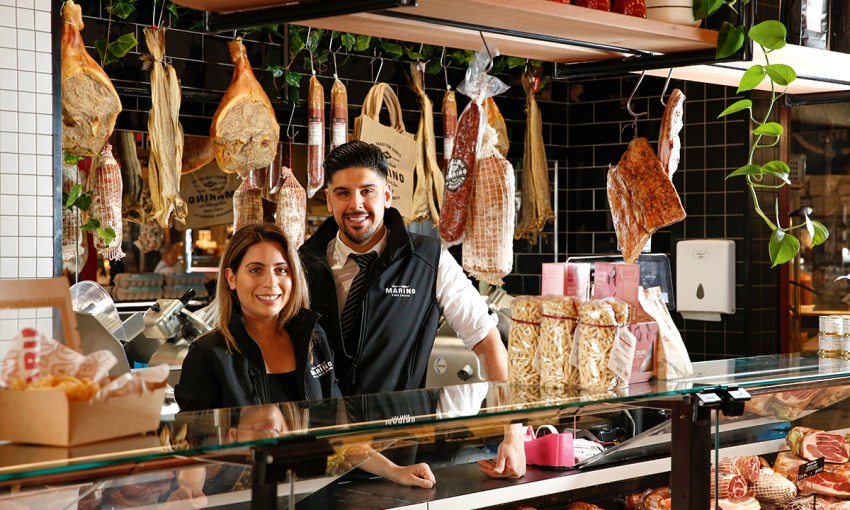
The passionate foodie grew up behind the counter of his family’s long-running Italian smallgoods business Marino Meat and Food Store, as a youngster greeting customers while standing on a stool behind the bench and then getting lost amongst the market. Marino’s has been a local institution since the 1950s, keeping alive the traditions of an Italian continental butcher.
“I’ve grown up there in that shop; it’s been my life. Some customers have been coming in since I was about five and are now seeing my kids come through. It’s a special place, it really is,” Riccardo says.
Today, he and wife Katrina run the store, which has been extensively renovated, inspired by their travels to the varied regions of Italy. Riccardo’s family originates from Abruzzo, known for its cheese and Montepulciano wine.
“They’re real foodies in the Abruzzo region and it’s very rich style of food that comes out of there such as heavy sauces and polenta; it’s a nice mix,” he says.
Katrina has family in Calabria, where the couple often visit, picking up ideas and inspiration. “Making smallgoods is in my blood, but every time we’ve been to the Italian regions that specialise in prosciutto or salami, I’ve found a quality there that you can’t get in Australia,” Riccardo says. “So, we decided to start making our own salumi.”
Made in humidity-controlled fermenting and curing rooms at the business’ Croydon Park facility, the salumi include a cured Mayura Station Wagyu that has made its way onto restaurant menus around town. Along with the new line of house-made smallgoods, pasta is now made fresh daily, using an extruder imported from Italy and recipes from local chefs.
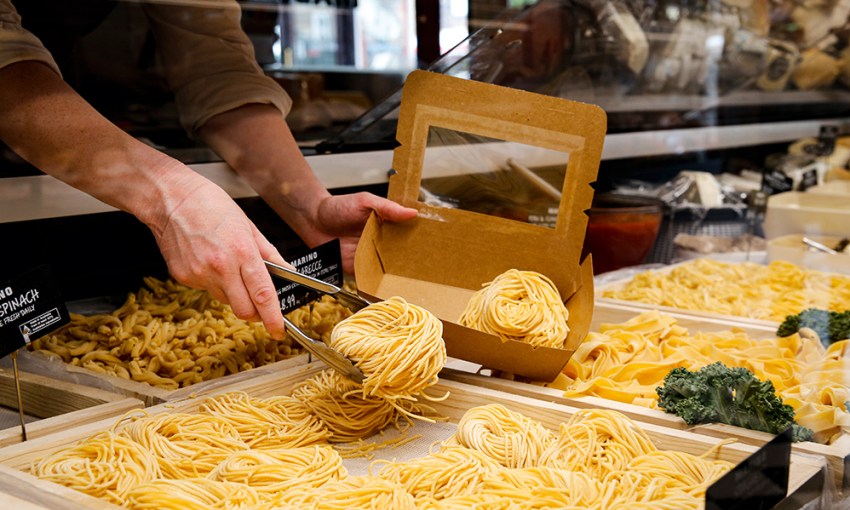
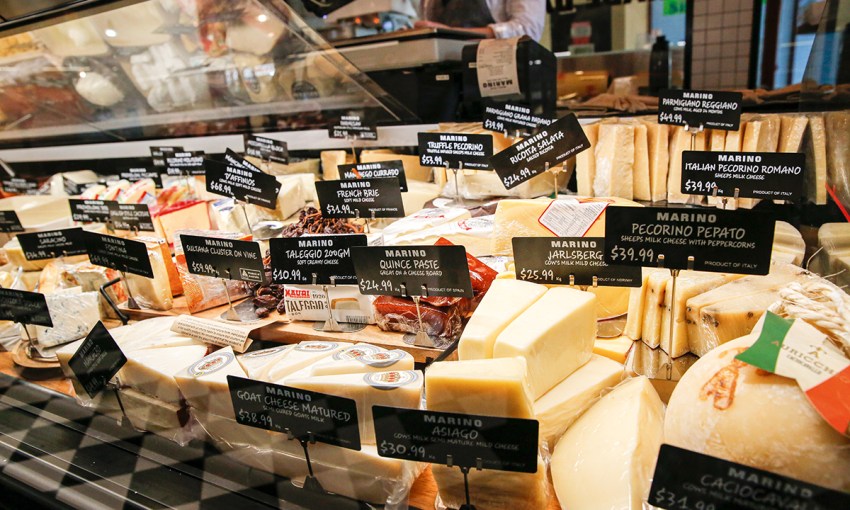
At Marino’s, customers will find foods from all over Italy — chilli sauces from the south, rustic couscous (fregola) from Sardinia, prosciutto from San Daniele, and pasta from Gragnano in Naples. “We try to find the best of what each region has to offer,” he says.
The shop also imports Bonifanti panettone, which is made with a mother yeast that’s been alive for almost 200 years.
“It is outstanding, I’ve tried a lot of panettone in my time, and this brand literally takes the cake,” he says.
Riccardo attributes much of his learning to store manager Claudio Priasca, who’s been working with the family for 25 years.
“I used to work with Claudio in my school holidays and he taught me a lot about customer service, how to be a butcher, and he runs that store as if it’s his own. He’s the face of Marino’s,” Riccardo says.
With Riccardo and Katrina’s young children Annalisa and Raffele now coming into the store, there may be potential for another generation of family tradition.
“Raffele is going to be four soon and I’m trying to get him behind the counter as soon as possible.”
Flavours of South East Asia
With a cult following of local food aficionados, Asian Gourmet has been a weekday lunch staple for generations, attracting politicians, lawyers and even celebrity chefs, who return time and again for a tasty hit of the restaurant’s addictively spicy laksas.
The restaurant is a market institution run by Charles Lo and Doreen Chiaw, who migrated from Malaysia with their two children in 1988 and started working in the market soon after. A formidable team at Asian Gourmet for 17 years, Doreen is the iconic face of the restaurant who runs the front of house, while Charles is the chef.
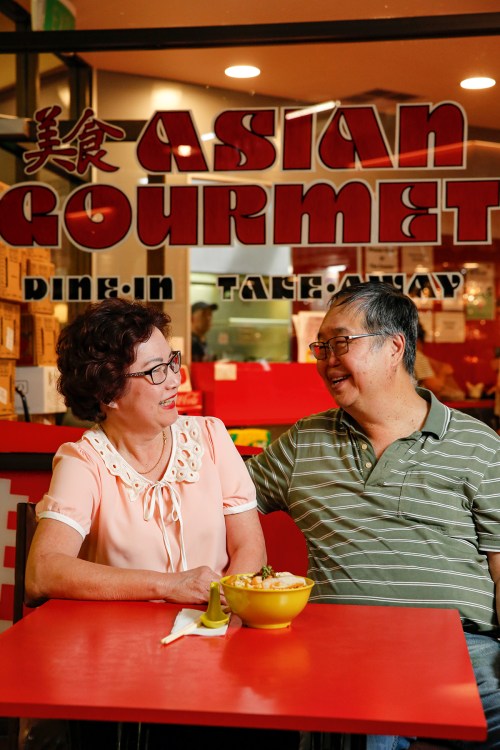
The most popular dish is the restaurant’s iconic Singapore Laksa. The Sarawak Laksa is a recipe adapted from the couple’s home state of Sarawak, Malaysia, and has quite a bit more kick.
“I never bother to count how many laksas we sell, but I know we are talking about hundreds each week,” Charles says.
Charles feels great responsibility as custodian of a recipe that he spent years refining under the watchful eye of his mother, adapting it for Australian tastes. As he has done six days a week for some 30 years, Charles gets to work at 7am to dice onions and wok-fry his ingredients and spices to create his condensed, flavoursome laksa paste.
What sets this revered spicy noodle soup apart is a dedication to making the recipe from scratch using fresh ingredients. Nothing comes from a can and Charles even uses fresh dairy milk, not canned coconut milk. He’s thrilled when customers return from South East Asia and report that his laksa is better than anything they could find.
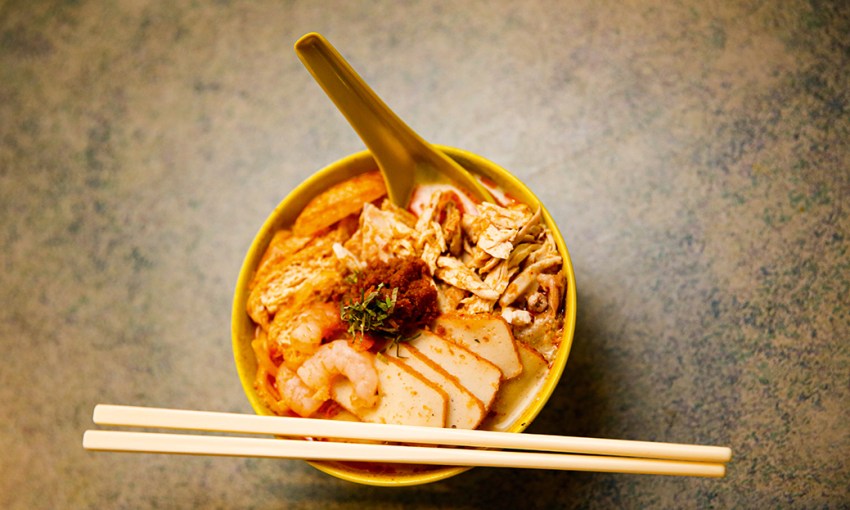
“My customers are all regulars,” he says. “Some brought their children here 30 years ago and now their children bring their partners and families here. You see them grow up and most of them still come every week. If they keep coming back you know you’re doing the right thing.
“If a customer finds that the taste has changed, you may not see them again. That’s the scary part. So, I must personally make sure I prepare everything from the very start.”
With such a cult following, it’s often been suggested that Asian Gourmet expand to more restaurants, but Charles isn’t interested. “If you expand, it becomes harder to maintain your standard and it would defeat the purpose of meeting the quality for my customers,” he says.
In Malaysia, Charles worked as an engineer and became a cook out of necessity.
“I never knew how to cook before, so I learnt slowly,” he says. Charles’ mother would still poke her head into the store to check on things right up until sadly she passed away earlier this year at the age of 97.
“We celebrate her life; she was a fantastic cook. She would always come to the shop, check on my ingredients, make sure everything was still up to scratch.”
The couple’s children Alvin and Tracey worked at Asian Gourmet as teenagers, and continue to come into the markets each Friday and Saturday to help their parents, despite both being full-time professionals.
“I’m very lucky they still come to see me,” says Charles.
This story first appeared in the Dec 2020/Jan 2021 issue of SALIFE magazine.



